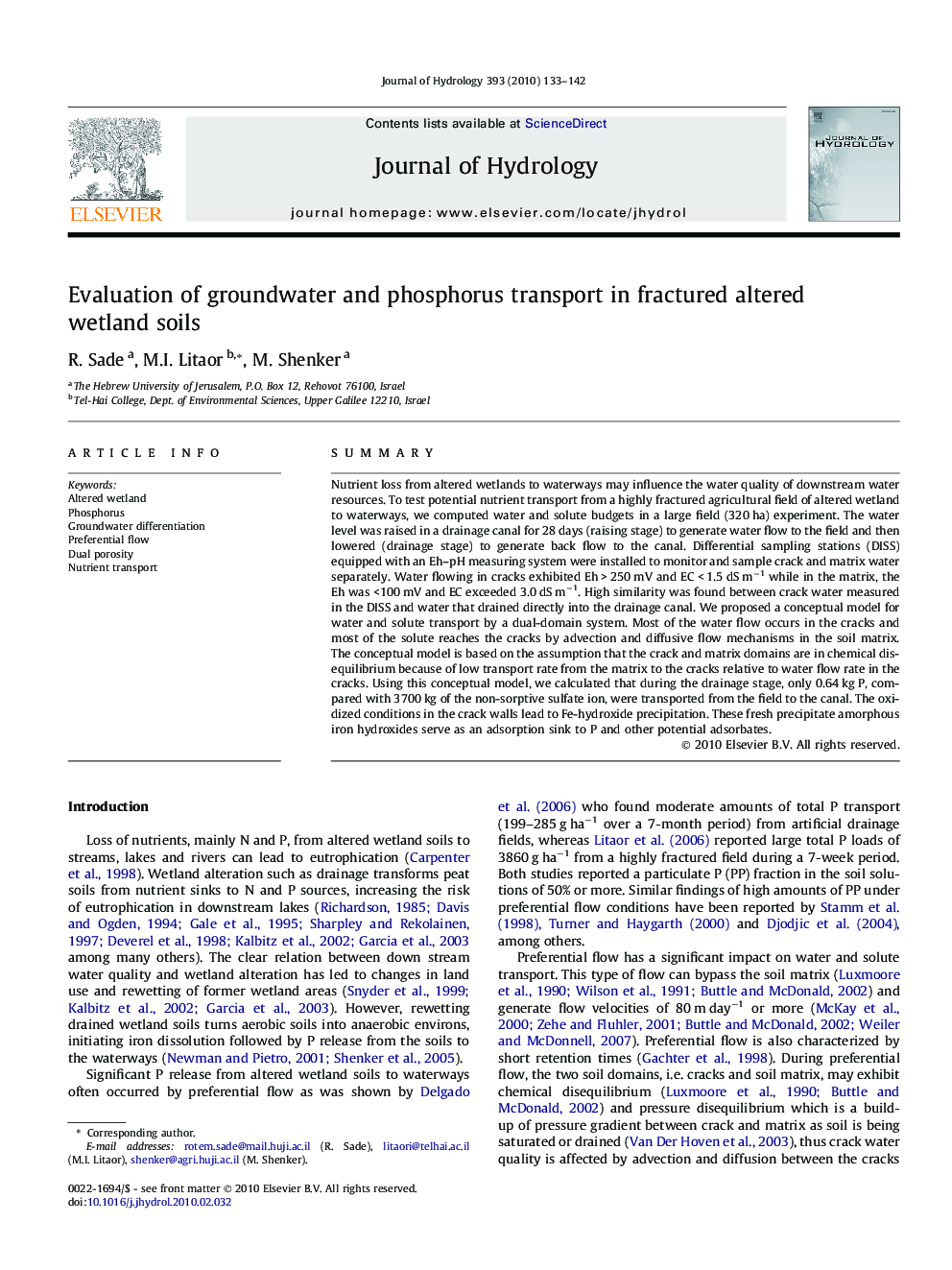| Article ID | Journal | Published Year | Pages | File Type |
|---|---|---|---|---|
| 4577960 | Journal of Hydrology | 2010 | 10 Pages |
SummaryNutrient loss from altered wetlands to waterways may influence the water quality of downstream water resources. To test potential nutrient transport from a highly fractured agricultural field of altered wetland to waterways, we computed water and solute budgets in a large field (320 ha) experiment. The water level was raised in a drainage canal for 28 days (raising stage) to generate water flow to the field and then lowered (drainage stage) to generate back flow to the canal. Differential sampling stations (DISS) equipped with an Eh–pH measuring system were installed to monitor and sample crack and matrix water separately. Water flowing in cracks exhibited Eh > 250 mV and EC < 1.5 dS m−1 while in the matrix, the Eh was <100 mV and EC exceeded 3.0 dS m−1. High similarity was found between crack water measured in the DISS and water that drained directly into the drainage canal. We proposed a conceptual model for water and solute transport by a dual-domain system. Most of the water flow occurs in the cracks and most of the solute reaches the cracks by advection and diffusive flow mechanisms in the soil matrix. The conceptual model is based on the assumption that the crack and matrix domains are in chemical disequilibrium because of low transport rate from the matrix to the cracks relative to water flow rate in the cracks. Using this conceptual model, we calculated that during the drainage stage, only 0.64 kg P, compared with 3700 kg of the non-sorptive sulfate ion, were transported from the field to the canal. The oxidized conditions in the crack walls lead to Fe-hydroxide precipitation. These fresh precipitate amorphous iron hydroxides serve as an adsorption sink to P and other potential adsorbates.
